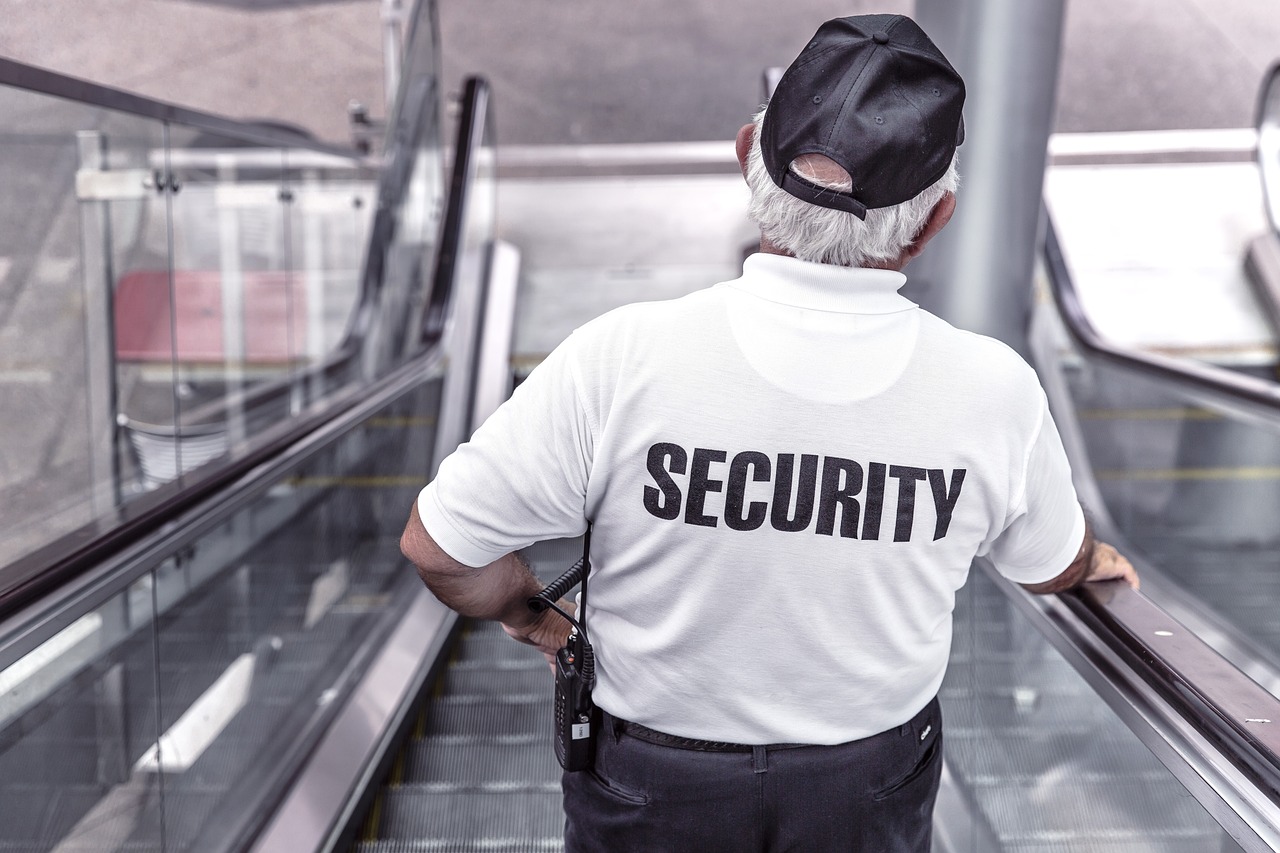Understanding Human Behavior and Its Impact on Safety
In today's fast-paced world, understanding human behavior is crucial for enhancing safety across various environments, be it in the workplace, at home, or in public spaces. The intricate relationship between our psychological makeup and safety practices cannot be overstated. Every decision we make, especially in high-stakes situations, is influenced by a myriad of factors that often go unnoticed. This article aims to unravel the complexities of human behavior and how it impacts safety protocols, ultimately leading to better risk management and decision-making processes.
Imagine you're driving down a busy highway. Your mind is racing, and suddenly, you notice a car swerving dangerously close to you. In that split second, your brain is flooded with thoughts and emotions, all of which influence your reaction. This scenario exemplifies how psychological factors play a critical role in assessing risk and making split-second decisions. By delving into the psychology of risk perception, cognitive biases, and emotional influences, we can better understand how to foster a culture of safety that resonates with individuals at a personal level.
At the heart of safety is the need for awareness and understanding. We often think we know what risks we face, but our perceptions can be skewed by various cognitive biases. These biases can cloud our judgment, leading to decisions that may compromise safety. For instance, consider the overconfidence bias, where individuals believe they are less likely to experience negative outcomes compared to others. This can lead to dangerous behaviors, such as neglecting safety gear or taking unnecessary risks. Recognizing these biases is the first step toward creating effective training programs that encourage realistic risk assessments and promote safer behaviors.
Furthermore, social norms heavily influence our actions. We are often swayed by the behaviors of those around us, which can either enhance or undermine safety practices. When organizations cultivate a culture that prioritizes safety and encourages positive behaviors, they create an environment where individuals feel compelled to adhere to safety protocols. This cultural shift not only improves compliance but also fosters a sense of community where everyone is invested in each other's safety.
In summary, understanding human behavior is not just an academic exercise; it is a practical necessity for enhancing safety in various contexts. By addressing psychological factors, recognizing cognitive biases, and leveraging social norms, organizations can develop more effective safety protocols that resonate with individuals on a personal level. As we continue to explore this relationship, we pave the way for a safer future where decision-making is informed by a deeper understanding of the human psyche.
- What is the importance of understanding human behavior in safety?
Understanding human behavior helps in identifying potential risks and improving safety protocols by addressing psychological factors and biases. - How do cognitive biases affect safety decisions?
Cognitive biases can lead to flawed judgments and risky behaviors, making it essential to recognize and mitigate their impact on decision-making. - What role do social norms play in safety compliance?
Social norms shape individual behaviors; fostering positive norms can enhance adherence to safety practices within organizations. - How can organizations improve their safety training programs?
Organizations can enhance their safety training by incorporating insights from psychology, focusing on behavioral modifications, and regularly evaluating training effectiveness.

The Psychology of Risk Perception
This article explores the intricate relationship between human behavior and safety, highlighting how psychological factors influence decision-making and risk management in various environments.
When we talk about risk perception, we're diving into a fascinating world where our brains play tricks on us. Imagine standing at the edge of a cliff—your heart races, your palms sweat, and suddenly, that drop feels a lot more dangerous than it actually is. This is a classic example of how our emotions can distort our understanding of risk. People often assess danger not just based on the actual facts, but heavily influenced by their emotions, experiences, and even the opinions of those around them.
To truly grasp how this works, let’s consider a few psychological factors that shape our perception of risk:
- Personal Experience: If someone has had a negative experience with a specific situation, they are likely to perceive that situation as riskier than someone who hasn’t.
- Media Influence: The way risks are portrayed in the media can amplify fears, leading to an exaggerated sense of danger.
- Social Influence: What others think and say can significantly impact our own perceptions. If a friend expresses fear about flying, you might start to feel uneasy about it too.
Understanding these factors is crucial for improving safety protocols. For instance, if a workplace is aware that employees have a heightened fear of certain tasks due to past incidents or media coverage, they can implement targeted training and support to address these fears head-on. By providing information that counters misconceptions and emphasizes safety measures, organizations can help employees develop a more accurate understanding of risks involved in their tasks.
Moreover, it’s essential to recognize that risk perception is not static; it can change over time. For example, after a series of safety training sessions, individuals might begin to perceive certain risks differently, leading to more informed decision-making. This evolution in perception can be supported by continuous education and open discussions about safety practices.
In conclusion, the psychology of risk perception is a complex interplay of personal experiences, societal influences, and emotional responses. By addressing these factors, organizations can enhance their safety protocols, ensuring that employees are not just aware of the risks, but are also equipped to handle them effectively.
- What is risk perception? Risk perception refers to the subjective judgment that people make about the characteristics and severity of a risk.
- How does personal experience influence risk perception? Personal experiences can lead individuals to overestimate or underestimate risks based on their past encounters with similar situations.
- Can media influence risk perception? Yes, media portrayals can significantly shape public perception of risks, often leading to a heightened sense of danger.

Cognitive biases can significantly distort our perception of safety, leading to decisions that may not align with reality. These biases are like invisible glasses through which we view the world, tinting our judgment and affecting our actions. When it comes to safety, these biases can have serious consequences, as they often cause individuals to overlook risks or misinterpret information. Understanding these biases is crucial for organizations aiming to enhance safety protocols and minimize accidents.
One of the most common cognitive biases in safety decision-making is the optimism bias. This bias leads individuals to believe that they are less likely to experience negative events compared to others. For instance, a construction worker might think, "Accidents happen to others, but I’m careful enough to avoid them." This mindset can result in complacency, where safety precautions are either ignored or deemed unnecessary. To combat this, organizations can implement training that emphasizes real-life statistics and personal stories, making the risks feel more tangible and relatable.
Another significant bias is the availability heuristic, which refers to our tendency to rely on immediate examples that come to mind when evaluating a situation. If a worker recently witnessed a minor accident, they might overestimate the likelihood of such incidents occurring again. This can lead to an exaggerated perception of risk in certain tasks while downplaying others that may be equally dangerous. Organizations can address this by providing comprehensive safety training that covers a wide range of scenarios, rather than just focusing on the most memorable incidents.
Additionally, the confirmation bias plays a role in safety decision-making. This bias occurs when individuals seek out information that confirms their pre-existing beliefs while ignoring contradictory evidence. For example, if a manager believes that a particular safety measure is effective, they may overlook data suggesting it is not. To mitigate this bias, organizations should encourage a culture of open dialogue, where employees feel comfortable presenting alternative viewpoints and data can be reviewed objectively.
To further illustrate the impact of cognitive biases on safety decisions, consider the following table that outlines common biases, their effects, and potential mitigation strategies:
| Cognitive Bias | Effect on Safety | Mitigation Strategy |
|---|---|---|
| Optimism Bias | Underestimation of risk | Real-life statistics and personal stories |
| Availability Heuristic | Overestimation of certain risks | Comprehensive safety training on a variety of scenarios |
| Confirmation Bias | Ignoring contradictory evidence | Encouraging open dialogue and objective data review |
By recognizing and addressing these cognitive biases, organizations can create a more informed and proactive approach to safety. Training programs that specifically target these biases can empower employees to make better decisions, ultimately leading to a safer work environment. It's not just about following rules; it's about cultivating a mindset that prioritizes safety and encourages continuous learning and improvement.
- What are cognitive biases? Cognitive biases are systematic patterns of deviation from norm or rationality in judgment, which can affect decision-making.
- How do cognitive biases impact safety? They can lead to misjudgment of risks, complacency, and ignoring crucial safety protocols.
- What can organizations do to mitigate cognitive biases? Organizations can implement training programs that raise awareness of these biases and promote a culture of open dialogue and continuous learning.

When we talk about decision-making, especially in safety-critical situations, heuristics play a pivotal role. These mental shortcuts help us make quick judgments without having to analyze every detail exhaustively. Think of heuristics as your brain's way of taking a shortcut through a maze; it helps you find the exit faster, but sometimes you might miss important signs along the way. For instance, in a high-stress environment like a construction site, a worker might rely on heuristics to quickly assess whether a situation is safe. While this can be beneficial for speed, it can also lead to oversights that jeopardize safety.
One common heuristic is the availability heuristic, where individuals judge the likelihood of an event based on how easily examples come to mind. If someone has recently seen news about accidents in a particular industry, they might overestimate the risks associated with their own work environment. This can lead to unnecessary fear or, conversely, to a false sense of security if they haven't recently heard of any incidents. Understanding this heuristic can help organizations tailor their safety communications to ensure that employees have a balanced view of the risks they face.
Another important heuristic is the representativeness heuristic, where people make judgments based on how much something resembles a typical case. For instance, if a worker has seen several accidents involving a specific type of machinery, they might assume that all machines of that type are dangerous, even if the one they're using is well-maintained and regularly inspected. This can create a culture of fear or avoidance that isn't necessarily justified. By educating workers on the actual safety records and maintenance practices of equipment, organizations can help mitigate the impact of this heuristic.
To illustrate the impact of heuristics on safety, consider the following table that summarizes common heuristics and their potential effects on decision-making in safety contexts:
| Heuristic | Description | Potential Impact on Safety |
|---|---|---|
| Availability Heuristic | Judging the likelihood of an event based on recent examples or experiences. | May lead to overestimating risks or developing unnecessary fears. |
| Representativeness Heuristic | Making judgments based on how much something resembles a typical case. | Can create unjustified fears or avoidance of certain equipment or situations. |
| Overconfidence Heuristic | Believing that one is less likely to experience a negative event than others. | May result in risky behaviors and underestimating hazards. |
Recognizing these heuristics is crucial for organizations aiming to improve safety protocols. By understanding how these mental shortcuts influence decision-making, companies can develop training programs that help employees recognize when they might be relying too heavily on heuristics. This awareness can lead to more informed decisions and ultimately foster a safer working environment. After all, knowledge is power, and in the realm of safety, it can mean the difference between a close call and a serious incident.
In conclusion, heuristics are a double-edged sword in safety contexts. While they can expedite decision-making, they can also lead to significant errors if not properly managed. By fostering an environment where employees are encouraged to question their instincts and seek additional information, organizations can harness the benefits of heuristics while minimizing their risks.

Overconfidence bias is a fascinating psychological phenomenon that can have serious implications for safety in various environments. It refers to the tendency of individuals to overestimate their own abilities, knowledge, or the accuracy of their judgments. This bias can lead to a dangerous underestimation of risks, as people may believe they are more capable of handling situations than they truly are. Imagine a skilled driver who thinks they can text while driving because they feel confident in their reflexes. This misplaced confidence can result in catastrophic consequences.
When it comes to workplace safety, overconfidence bias can manifest in numerous ways. Employees may skip safety protocols because they believe they can manage without them, or they might ignore warning signs, thinking that accidents happen to others, not to them. This behavior is especially prevalent in high-risk industries such as construction, manufacturing, and healthcare, where the stakes are incredibly high. To combat this bias, organizations must foster an environment that encourages realistic self-assessment and promotes a culture of safety.
One effective strategy is to implement comprehensive training programs that not only address technical skills but also emphasize the importance of risk awareness. For instance, using simulations can provide employees with a safe space to experience the consequences of overconfidence without real-world repercussions. Additionally, organizations can utilize data to highlight the frequency of accidents and near misses, which can serve as a sobering reminder of the potential dangers of overestimating one's abilities.
To illustrate the impact of overconfidence bias on safety, consider the following table that outlines common scenarios and their potential consequences:
| Scenario | Overconfidence Behavior | Potential Consequence |
|---|---|---|
| Skipping PPE | Believing safety gear is unnecessary | Increased risk of injury |
| Ignoring Safety Protocols | Assuming experience negates the need for rules | Accidents and legal repercussions |
| Underestimating Hazardous Conditions | Feeling overly confident in handling risks | Injury or fatality |
By recognizing and addressing overconfidence bias, organizations can develop more effective training programs that not only enhance employees' skills but also instill a more cautious and safety-oriented mindset. This approach can lead to a significant reduction in accidents and injuries, ultimately fostering a safer workplace environment.
- What is overconfidence bias? Overconfidence bias is the tendency to overestimate one's abilities or knowledge, which can lead to risky behaviors and poor decision-making.
- How does overconfidence bias affect safety? It can result in individuals ignoring safety protocols, underestimating risks, and ultimately leading to accidents and injuries.
- What can organizations do to mitigate overconfidence bias? Organizations can implement training programs that emphasize realistic risk assessments, use simulations, and provide data on accidents to raise awareness.

The anchoring effect is a fascinating cognitive bias that significantly influences decision-making, especially in safety-critical environments. It occurs when individuals rely too heavily on the first piece of information they encounter (the "anchor") when making subsequent judgments. This can lead to skewed perceptions of risk and safety, as initial data can unduly sway our conclusions. For instance, if a safety report highlights a particular risk as "moderate," subsequent assessments of that risk may be biased towards this initial classification, regardless of new evidence that suggests a different level of danger.
Imagine you’re at work, and a colleague mentions that the likelihood of a workplace accident is around 20%. This number becomes your anchor. Even if you later learn that the actual risk is much lower, your perception may still gravitate towards that initial figure. This is particularly dangerous in safety contexts, where accurate risk assessment is crucial for preventing accidents and ensuring a safe working environment.
To illustrate the anchoring effect, consider the following example:
| Scenario | Initial Anchor | Final Risk Assessment |
|---|---|---|
| Workplace Injury Risk | 20% | 15% (but perceived as 20% due to anchoring) |
| Machine Malfunction Risk | 10% | 5% (but perceived as 10% due to anchoring) |
In both scenarios, the initial percentages serve as anchors, affecting how individuals perceive the actual risks involved. This highlights the importance of being aware of the anchoring effect when discussing safety statistics and risk assessments.
Organizations can combat the anchoring effect by encouraging a culture of critical thinking and continuous learning. Training programs should include strategies to challenge initial perceptions and promote a more comprehensive understanding of risks. Engaging employees in discussions about risk assessments and decision-making processes can help mitigate the anchoring effect's influence. By fostering an environment where questioning initial information is encouraged, organizations can enhance their safety protocols and reduce the likelihood of accidents.
- What is the anchoring effect?
The anchoring effect is a cognitive bias where individuals rely too heavily on the first piece of information they receive when making decisions.
- How does the anchoring effect impact safety decisions?
It can lead to misjudgments about risk levels, as initial information can skew perceptions and influence subsequent assessments.
- How can organizations mitigate the anchoring effect?
By promoting critical thinking, encouraging discussions about risk, and implementing training programs that challenge initial perceptions.

Social norms are like the invisible threads that bind us together in society, shaping our behavior and influencing our decisions without us even realizing it. These unwritten rules dictate what is considered acceptable or unacceptable in various contexts, including safety practices in the workplace. When it comes to safety, the influence of social norms can be both profound and multifaceted. For instance, if an organization fosters a culture where safety is prioritized and openly discussed, employees are more likely to adopt safe practices. Conversely, in environments where safety is taken lightly, individuals may feel pressured to conform to risky behaviors, thinking, "Everyone else is doing it, so it must be okay."
Understanding the dynamics of social norms can empower organizations to create a culture that emphasizes safety. This involves not only communicating safety expectations clearly but also modeling those behaviors at every level of the organization. When leaders consistently demonstrate safe practices, it sends a strong message to employees that safety is a shared value. For example, if a manager wears protective gear and follows safety protocols diligently, it encourages team members to do the same. In this way, social norms can be harnessed to promote a proactive safety culture.
Additionally, peer influence plays a critical role in shaping safety behaviors. Employees often look to their colleagues for cues on how to behave, especially in high-pressure situations. If a team member witnesses a colleague taking shortcuts or ignoring safety procedures, they might feel compelled to follow suit, believing that this behavior is acceptable. To counteract this, organizations can implement positive reinforcement strategies that celebrate safe behaviors and highlight the importance of collective responsibility. This could include recognizing employees who consistently prioritize safety or sharing success stories that demonstrate the benefits of a safety-first mindset.
To further illustrate the impact of social norms on safety behavior, consider the following table that outlines different types of social norms and their effects on workplace safety:
| Type of Social Norm | Description | Impact on Safety |
|---|---|---|
| Descriptive Norms | What most people do in a given situation. | Can encourage safe or unsafe behaviors based on the majority's actions. |
| Injunctive Norms | What is approved or disapproved by the group. | Strongly influences individuals to adhere to safety protocols when safety is valued. |
| Personal Norms | Individual beliefs about what is right or wrong. | Can either align with or contradict organizational norms, affecting compliance. |
In conclusion, recognizing and leveraging social norms can significantly enhance safety in the workplace. By fostering an environment where safe behaviors are the norm, organizations can reduce risk and promote a culture of safety that benefits everyone. After all, when safety becomes a shared value, it transforms from a mere obligation into a collective commitment that everyone upholds.
- What are social norms? Social norms are unwritten rules that govern behavior in society, influencing how individuals act in various situations.
- How do social norms affect safety in the workplace? Social norms can encourage or discourage safe behaviors based on the prevailing attitudes and practices within the organization.
- What can organizations do to promote positive social norms related to safety? Organizations can model safe behaviors, recognize employees who prioritize safety, and create a culture that values safety as a collective responsibility.

When we think about safety, we often focus on the tangible aspects: the equipment, the protocols, and the training. However, a crucial yet often overlooked element is the emotional landscape that influences how individuals respond to safety measures. Emotions such as fear, anxiety, and even confidence can significantly impact safety-related behaviors. For instance, consider a worker who feels anxious about operating heavy machinery. This anxiety may lead them to rush through safety checks or make hasty decisions, ultimately increasing the risk of accidents.
Furthermore, emotions can act as a double-edged sword. While fear can motivate individuals to adhere to safety protocols, excessive fear can paralyze decision-making. This paradox is particularly evident in high-pressure environments, where the stakes are high, and the emotional responses can dictate actions. Understanding these emotional factors is essential for organizations aiming to create a safer workplace.
To illustrate this point, let’s break down some key emotional factors that influence safety behavior:
- Fear: While a certain level of fear can enhance caution, too much can lead to avoidance behaviors, where individuals may skip necessary safety measures out of sheer panic.
- Anxiety: Chronic anxiety can cloud judgment, making it difficult for individuals to focus on tasks and follow protocols correctly.
- Confidence: Overconfidence can lead to complacency, where individuals underestimate risks and neglect safety practices.
By recognizing these emotions, organizations can develop targeted interventions. For example, implementing stress management workshops can help employees cope with anxiety, while confidence-building training can address overconfidence biases. Additionally, creating an open environment where employees feel safe discussing their fears can lead to more effective safety practices. After all, when individuals feel supported, they are more likely to engage in safe behaviors.
Moreover, it's essential to consider the impact of leadership on emotional factors. Leaders who prioritize emotional well-being and foster a culture of safety can significantly influence how employees perceive risks and adhere to safety protocols. When leaders model safe behaviors and openly discuss emotional challenges, they create an atmosphere where safety is a shared responsibility.
In summary, emotional factors play a pivotal role in shaping safety behavior. By addressing these factors, organizations can enhance safety outcomes and create a more engaged workforce. Understanding the emotional triggers that influence decision-making can lead to more effective safety interventions and ultimately a safer workplace.
Q1: How do emotions affect safety behavior?
A1: Emotions can significantly influence safety behavior by affecting decision-making processes. For instance, fear may prompt cautious behavior, while excessive anxiety can lead to hasty decisions that compromise safety.
Q2: What can organizations do to address emotional factors in safety?
A2: Organizations can implement stress management programs, create a supportive environment for discussing fears, and provide training that builds confidence in handling safety protocols.
Q3: How can leadership impact safety behavior related to emotions?
A3: Leaders who prioritize emotional well-being and model safe behaviors can foster a culture of safety, encouraging employees to take safety seriously and feel comfortable discussing their concerns.

Stress is an inevitable part of life, and it can have a profound impact on how we make decisions, especially in safety-critical situations. When faced with high-pressure environments, our brains often enter a state of heightened alertness, which can cloud judgment and lead to impulsive choices. Imagine trying to navigate a crowded street while juggling multiple tasks; the stress can make it difficult to focus on the road ahead, increasing the likelihood of accidents.
Research has shown that stress can trigger a fight-or-flight response, which may push individuals towards quick, sometimes reckless decisions. For instance, consider a construction worker who feels overwhelmed by tight deadlines. Instead of following safety protocols, they might cut corners to meet expectations, putting themselves and others at risk. This scenario underlines the importance of understanding the relationship between stress and decision-making in safety contexts.
Moreover, stress can exacerbate cognitive biases, leading to poor risk assessment. When stressed, individuals are more likely to rely on heuristics—mental shortcuts that simplify decision-making but can also lead to errors. For example, a firefighter might underestimate the severity of a blaze due to the adrenaline rush, prioritizing speed over safety. Recognizing these patterns is crucial for developing effective interventions.
To mitigate the adverse effects of stress on decision-making, organizations can implement various strategies:
- Training Programs: Offer training that helps employees recognize stress triggers and develop coping mechanisms.
- Support Systems: Establish a supportive work environment where employees feel comfortable discussing stress-related issues.
- Mindfulness Practices: Encourage mindfulness or relaxation techniques that can help reduce stress levels and improve focus.
In conclusion, understanding how stress influences decision-making is essential for creating a safer workplace. By addressing the psychological aspects of stress, organizations can foster an environment where employees are better equipped to make sound decisions, ultimately enhancing overall safety.
Q1: How does stress affect decision-making in high-pressure situations?
A1: Stress can impair judgment, leading to impulsive and sometimes reckless decisions. It triggers a fight-or-flight response, which may prioritize speed over safety.
Q2: What are some effective strategies to manage stress in the workplace?
A2: Implementing training programs, establishing support systems, and encouraging mindfulness practices can help employees manage stress effectively.
Q3: Can cognitive biases be influenced by stress?
A3: Yes, stress can exacerbate cognitive biases, leading to poor risk assessment and decision-making.
Q4: Why is it important to understand the relationship between stress and safety?
A4: Understanding this relationship helps organizations develop strategies to enhance safety by equipping employees to make better decisions under pressure.

When it comes to safety in the workplace, motivation plays a pivotal role in ensuring compliance with safety protocols. Think about it: if employees are genuinely motivated to follow safety guidelines, they are far more likely to adhere to them. But what drives this motivation? Is it fear of consequences, a sense of responsibility, or perhaps the desire for recognition? Understanding these underlying factors can help organizations cultivate a culture of safety that resonates with their workforce.
One of the primary motivators for safety compliance is the intrinsic desire to protect oneself and others. Employees who understand the potential dangers of their work environment are often more inclined to take precautions. This awareness can be heightened through effective training programs that not only inform but also engage workers emotionally. For instance, sharing real-life stories about accidents or near-misses can create a sense of urgency and importance around safety practices.
Additionally, external motivators such as incentives and recognition can significantly enhance safety compliance. Consider implementing a rewards program that acknowledges employees who consistently follow safety protocols. This could be as simple as verbal recognition during team meetings or more structured rewards like bonuses or extra time off. When employees see that their efforts are appreciated, they are more likely to remain committed to maintaining safety standards.
Moreover, the role of leadership cannot be overstated. When leaders prioritize safety and demonstrate their commitment through actions, it sets a powerful example for employees. A study by the National Safety Council found that organizations with strong safety leadership see a marked decrease in workplace incidents. This highlights the importance of creating a top-down approach to safety, where management actively participates in safety initiatives and encourages open communication about safety concerns.
To further enhance understanding of the connection between motivation and safety compliance, organizations can utilize the following strategies:
- Regular Training Sessions: Conducting training sessions that not only cover safety protocols but also explore the psychological aspects of motivation can lead to a more informed workforce.
- Feedback Mechanisms: Establishing channels for employees to provide feedback on safety practices can foster a sense of ownership and responsibility.
- Peer Support Groups: Encouraging employees to form peer support groups can create a network of accountability, where individuals motivate each other to adhere to safety standards.
Ultimately, motivation is the key that unlocks the door to safety compliance. By understanding what drives employees and addressing those motivations through tailored training and recognition programs, organizations can create a safer work environment. Safety is not just about following rules; it's about fostering an atmosphere where everyone feels responsible and empowered to protect themselves and their colleagues.
- What are the key factors that influence motivation for safety compliance? Motivation can stem from intrinsic desires to protect oneself and others, as well as extrinsic rewards and recognition from the organization.
- How can leadership impact safety compliance? Strong safety leadership sets an example for employees and fosters a culture of safety, leading to increased compliance with safety protocols.
- What role does training play in enhancing motivation for safety? Effective training programs that engage employees emotionally can significantly increase their motivation to follow safety guidelines.

When it comes to safety in the workplace, one size does not fit all. Developing effective safety training programs requires a deep understanding of human behavior, as it plays a crucial role in how individuals respond to safety protocols. Imagine a world where employees not only understand the rules but also feel motivated to follow them. This is the essence of a well-structured training program. By tailoring the content to address psychological factors, organizations can create a more engaging and impactful learning experience.
First and foremost, it’s essential to recognize that behavioral change is at the heart of safety training. Traditional methods often focus solely on compliance, but this approach can lead to a superficial understanding of safety protocols. Instead, training should aim to modify unsafe behaviors by fostering a culture of safety. For instance, incorporating real-life scenarios and role-playing exercises can help employees visualize the consequences of their actions, making the training more relatable and effective.
Furthermore, it’s vital to consider the various learning styles of employees. Not everyone learns the same way; some may benefit from visual aids, while others might prefer hands-on experiences. By integrating a mix of teaching methods—such as videos, interactive workshops, and group discussions—organizations can cater to diverse learning preferences, ensuring that the message resonates with everyone. This approach not only enhances engagement but also improves retention of crucial safety information.
Another key aspect of effective safety training is the incorporation of emotional intelligence into the curriculum. Training programs that address emotional factors, such as fear or anxiety related to safety, can significantly impact how employees perceive risks. For example, discussing common fears and providing coping strategies can empower individuals to make safer choices, even in high-pressure situations. This emotional awareness can transform how employees approach safety, leading to a more proactive mindset.
To illustrate the importance of tailored training, consider the following table that outlines different training methods and their corresponding benefits:
| Training Method | Benefits |
|---|---|
| Interactive Workshops | Encourages participation and collaboration among employees |
| Visual Aids | Enhances understanding through visual representation of concepts |
| Role-Playing Scenarios | Allows employees to practice responses in a safe environment |
| Group Discussions | Facilitates sharing of experiences and collective problem-solving |
Moreover, regular evaluation of training programs is crucial for continuous improvement. Organizations should implement feedback mechanisms to assess the effectiveness of their training initiatives. This could involve surveys, interviews, or even direct observations of employee behavior post-training. By analyzing this data, companies can refine their strategies, ensuring that the training remains relevant and impactful.
In conclusion, developing effective safety training programs is not just about compliance; it's about creating a culture that prioritizes safety through understanding human behavior. By addressing psychological factors, incorporating diverse learning methods, and fostering emotional intelligence, organizations can enhance employee engagement and ultimately improve safety outcomes. After all, a safe workplace is not just a goal—it's a shared responsibility.
- What are the key components of an effective safety training program?
An effective safety training program should include tailored content, diverse teaching methods, emotional intelligence training, and regular evaluations.
- How can organizations assess the effectiveness of their training?
Organizations can assess training effectiveness through feedback mechanisms such as surveys, interviews, and direct observations of employee behavior.
- Why is emotional intelligence important in safety training?
Emotional intelligence helps employees understand and manage their feelings related to safety, leading to better decision-making in high-pressure situations.

Behavioral-Based Safety Training (BBST) is a transformative approach that focuses on understanding and modifying unsafe behaviors rather than merely enforcing rules. This training method recognizes that safety is not just about compliance but about creating a culture where individuals feel empowered to take responsibility for their actions. Imagine a workplace where employees not only follow safety protocols but actively participate in enhancing safety measures—this is the essence of BBST.
At its core, BBST emphasizes the importance of individual responsibility in safety practices. It encourages employees to observe and reflect on their own behaviors and the behaviors of their peers. By fostering an environment of open communication, workers are more likely to report unsafe practices without fear of retribution. This open dialogue is crucial because it not only helps identify hazards but also promotes a sense of community and shared responsibility.
One of the key components of BBST is the use of positive reinforcement. Instead of focusing solely on negative consequences for unsafe actions, this training method rewards safe behaviors. For instance, organizations might implement a recognition program that celebrates employees who consistently demonstrate safe practices. This not only boosts morale but also motivates others to follow suit.
To effectively implement BBST, organizations should consider the following strategies:
- Observation and Feedback: Regularly observe employees in their work environment and provide constructive feedback. This helps reinforce safe behaviors and correct unsafe ones in real-time.
- Peer-to-Peer Training: Encourage employees to train each other. This not only builds camaraderie but also allows for the sharing of best practices among colleagues.
- Incorporating Real-Life Scenarios: Use case studies and real-life examples during training sessions to illustrate the consequences of unsafe behaviors and the benefits of safe practices.
Furthermore, it’s essential to evaluate the effectiveness of BBST continuously. This can be done through regular assessments and feedback sessions, allowing organizations to refine their training programs based on employee responses and safety outcomes. By measuring the impact of training on behavior, companies can ensure that their safety culture evolves and improves over time.
In conclusion, Behavioral-Based Safety Training is not just a training program; it’s a holistic approach to cultivating a safety-first mindset within an organization. By empowering employees, fostering open communication, and reinforcing safe behaviors, organizations can significantly enhance their safety culture and reduce incidents in the workplace.
- What is Behavioral-Based Safety Training?
BBST is a training approach that focuses on modifying unsafe behaviors and promoting a culture of safety through individual responsibility and positive reinforcement. - How does BBST differ from traditional safety training?
Unlike traditional training that often emphasizes compliance and rules, BBST encourages active participation and self-reflection among employees to foster a proactive safety culture. - Can BBST be implemented in any industry?
Yes, BBST can be tailored to fit various industries, from construction to healthcare, making it a versatile approach to enhancing workplace safety. - How do organizations measure the effectiveness of BBST?
Organizations can measure the effectiveness through regular assessments, feedback from employees, and monitoring safety outcomes to refine their training strategies.

Evaluating the effectiveness of safety training programs is not just a box-ticking exercise; it’s a crucial aspect of ensuring that employees are not only aware of safety protocols but are also equipped to implement them in real-world scenarios. Think of it like a fitness program: you wouldn’t just go through the motions of exercising without tracking your progress, right? Similarly, organizations must measure the impact of their training initiatives to ensure they are fostering a culture of safety.
One effective way to evaluate training effectiveness is through pre- and post-training assessments. By gauging employees' knowledge and attitudes towards safety before and after the training, organizations can identify any shifts in understanding or behavior. This method provides tangible data that can highlight areas of improvement and success. For instance, if a training session focused on emergency procedures results in a significant increase in correct responses during follow-up assessments, it’s a clear indicator that the training was effective.
Moreover, organizations should consider implementing real-world simulations as part of their evaluation strategy. These simulations can mimic potential safety incidents, allowing employees to apply what they’ve learned in a controlled environment. The outcomes of these simulations can provide insights into how well employees can translate their training into practice. For example, if a team successfully navigates a fire drill after undergoing fire safety training, it showcases the training's effectiveness in preparing them for actual emergencies.
Another essential aspect of evaluating training effectiveness is gathering feedback from participants. This can be done through surveys or focus groups where employees can express their thoughts on the training content, delivery, and applicability. This feedback loop is invaluable as it not only helps in refining the training programs but also engages employees in the process, making them feel valued and heard. Here are some key questions organizations might ask:
- Did you find the training relevant to your job?
- What aspects of the training did you find most beneficial?
- How confident do you feel in applying what you learned?
Additionally, evaluating training effectiveness should extend beyond immediate feedback. Organizations should track safety incidents and compliance rates over time to see if there’s a correlation between training and improved safety outcomes. If, after implementing a new training program, there is a notable decrease in workplace accidents or safety violations, it suggests that the training has had a positive impact.
In summary, the evaluation of training effectiveness is a multifaceted process that requires a combination of assessments, real-world applications, participant feedback, and long-term tracking of safety outcomes. By employing these strategies, organizations can ensure that their safety training programs are not only informative but also transformative, leading to a safer work environment for everyone.
- What is the importance of evaluating training effectiveness? Evaluating training effectiveness helps organizations understand whether their training programs are successful in improving knowledge and behavior related to safety.
- How can organizations assess the effectiveness of their safety training? Organizations can use pre- and post-training assessments, real-world simulations, and participant feedback to evaluate training effectiveness.
- What role does employee feedback play in training evaluation? Employee feedback provides insights into the training's relevance and applicability, helping organizations improve their programs.
- Can training effectiveness be measured over time? Yes, organizations should track safety incidents and compliance rates over time to assess the long-term impact of training programs.
Frequently Asked Questions
- What is the relationship between human behavior and safety?
Human behavior plays a crucial role in safety as it influences how individuals perceive risks and make decisions. Psychological factors, such as cognitive biases and emotional responses, can significantly impact safety-related behaviors and decision-making processes.
- How does risk perception affect safety protocols?
Risk perception affects how individuals assess potential dangers. When people misjudge risks, they may either overreact or underreact, leading to inadequate safety measures. By understanding these perceptions, organizations can tailor safety protocols to address misconceptions and enhance overall awareness.
- What are cognitive biases, and how do they impact safety decisions?
Cognitive biases are systematic errors in thinking that can affect judgment and decision-making. In safety contexts, biases like overconfidence and the anchoring effect can lead to flawed assessments of risk, which is why recognizing and mitigating these biases is essential for improving safety outcomes.
- Why are social norms important in shaping safety behavior?
Social norms influence how individuals behave in group settings. When safety is prioritized as a norm within an organization, it encourages employees to adopt safer behaviors. Understanding these norms can help create a culture that fosters accountability and promotes safety.
- How do emotions affect safety-related behaviors?
Emotions such as fear, anxiety, or stress can significantly impact decision-making and risk-taking behaviors. For instance, high-stress situations may lead to hasty decisions that compromise safety. Analyzing these emotional factors can help design interventions that improve safety compliance.
- What is behavioral-based safety training?
Behavioral-based safety training focuses on changing unsafe behaviors by promoting a culture of safety and individual responsibility. This approach emphasizes the importance of understanding the psychological aspects of behavior, leading to more effective safety practices in the workplace.
- How can organizations evaluate the effectiveness of their safety training programs?
Regular evaluation of safety training programs is essential for continuous improvement. Organizations can assess the impact of training on employee behavior and safety outcomes, allowing them to refine their strategies and ensure that training remains relevant and effective.



















